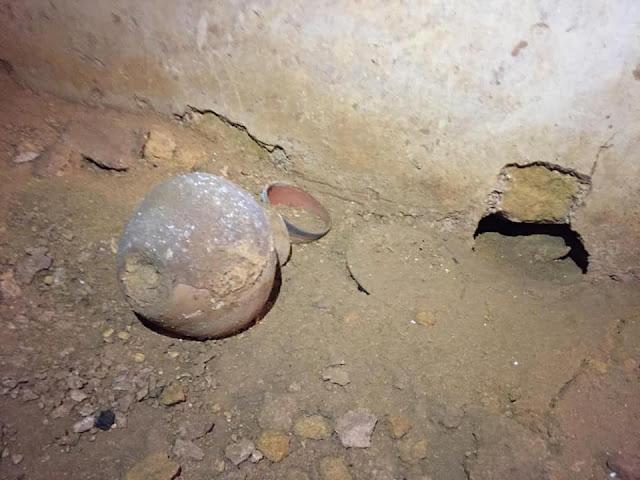The Municipal Archaeological Service of the Carmona Town Hall has reported the discovery of an intact Roman funerary chamber.
 |
| Credit: Ayuntamiento de Carmona |
In the chamber there are eight loculi or niches, six of which are occupied by funerary urns of different types of limestone and glass. The glass urns are encased inside protective lead containers.
 |
| Credit: Ayuntamiento de Carmona |
On the surface of three of these urns there are serigraphies that could correspond with the names of the deceased who were deposited in them.
 |
| Credit: Ayuntamiento de Carmona |
All these objects have already been transferred and deposited in the City Museum for detailed study and subsequent public exhibition.
 |
| Credit: Ayuntamiento de Carmona |
“It’s been 35 years since a tomb was found in such a magnificent state of preservation,” said municipal archaeologist, Juan Manuel Roman, adding that it didn’t appear to have suffered any deterioration over the centuries since it was sealed.
"There is barely two fingers worth of sedimentation," he added.
This mausoleum would form part of the funerary complex located to the west of the Roman city, in the vicinity of the Via Augusta and related to the current Archaeological Site of the Roman Necropolis.
Source: Ayuntamiento de Carmona [trsl. TANN, September 08, 2019]







No comments: